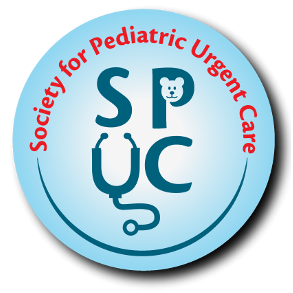BASICS
DESCRIPTION
- Limp- either painful (antalgic gait) or nonpainful (Trendelenburg gait)
- Differential diagnosis can be organized by location, age and duration of symptoms or type of gait abnormality
RISK FACTORS
- Trauma, infection, neoplasia and rheumatologic disorders produce antalgic gait
- Congenital, developmental or muscular disorders produce Trendelenburg gaits
PATHOPHYSIOLOGY
Antalgic gait has a shortened stance phase as child decreases time spent on the affected limb
- Trendelenburg gait the stance phase is equal between the involved and uninvolved sides but the child will lean or shift the center of gravity over the involved extremity for balance. Remember, it does not hurt to put weight on the affected limb with Trendelenburg gait.
ETIOLOGY
- Trauma, infection, neoplasia and rheumatologic disorders produce antalgic gait
- Congenital, developmental or muscular disorders produce Trendelenburg gaits
DIAGNOSIS
HISTORY
- History of trauma or new activity
- Duration and course (Location/severity, effect on daily activities, constant vs intermittent, worse in the morning and improve with activity vs symptoms worsen with activity)
- Fever, anorexia, weight loss, nighttime symptoms that awaken the child
PHYSICAL EXAM
- Ill appearing or significant pain suggests a more serious cause
- Gait evaluation- ask the child to walk up and down the corridor several times (child may need to be distracted to achieve natural gait)
- Musculoskeletal exam should thoroughly examine muscle strength, muscular atrophy, joint tenderness, bony tenderness, bony deformity, joint effusion, range of motion (passive and active), any inflammation of joints, tendons or muscles
- Galeazzi test
- Trendelenburg test
- FABERE test
- Genital exam may reveal testicle torsion or discharge indicative of gonococcal arthritis
DIAGNOSTIC TESTS & INTERPRETATION
Lab
Initial Lab Tests
- CBC, ESR, CRP if H&P inconclusive
Imaging
- AP and frog lateral XRay of the pelvis
- Ultrasound or MRI when XRays normal but suspect septic arthritis or transient synovitis
Diagnostic Procedures / Other
- Synovial fluid aspiration if septic joint is suspected
Pathological Findings
- Bloomberg’s sign on radiograph of pelvis (widening or blurring of the epiphyseal plate) suggests SCFE
- Klein’s line abnormal suggests SCFE (normally a line drawn along the superior border of the femoral neck should intersect the femoral head)
DIFFERENTIAL DIAGNOSIS
- Overuse syndrome
- Soft tissue injury -contusion, sprain, strain(Trauma)
- Apophysitis
- Legg-Calve-Perthes disease (acquired)
- Slipped Capital Femoral Epiphysis (acquired)
- Fracture(Trauma)
- Toddlers fracture (Trauma, occult)
- Osteomyelitis(Infectious)
- Septic Arthritis(Infectious)
- Transient Monoarticular synovitis (Rheumatologic)- SEE TRANSIENT SYNOVITIS
- Rheumatic disease
- Tumor
- Reflex sympathetic dystrophy
- Osgood-Schlatter disease
TREATMENT
MEDICATION
First Line
Second Line
COMPLEMENTARY & ALTERNATIVE THERAPIES
SURGERY / OTHER PROCEDURES
- SCFE needs pinning to prevent further slippage
DISPOSITION
Admission Criteria
- Critical care admission criteria
- Depends on the final diagnosis but some life or limb threatening causes are Septic arthritis, Osteomyelitis, Tumor, Developmental dysplasia of the hip, Slipped capital femoral epiphysis, Epidural abscess, Appendicitis, Discitis, Meningitis, Epidural abscess of the spine, Torsion of the testicle
Discharge Criteria
- Depends on the final diagnosis but would hesitate to discharge anyone without assured follow up
Issues For Referral
- Depends on the final diagnosis
- Pain that persists for more than 2 weeks should be referred to Orthopedics
FOLLOW UP
FOLLOW-UP RECOMMENDATIONS
- Discharge instructions and medications
- Activity
DIET
PROGNOSIS
COMPLICATIONS
REFERENCES
- Textbook of Pediatric Emergency Medicine
- Nelson Textbook of Pediatric
- First Aid for Pediatric Boards
- Atlas of Pediatric Physical Diagnosis
- Uptodate (online reference database)
